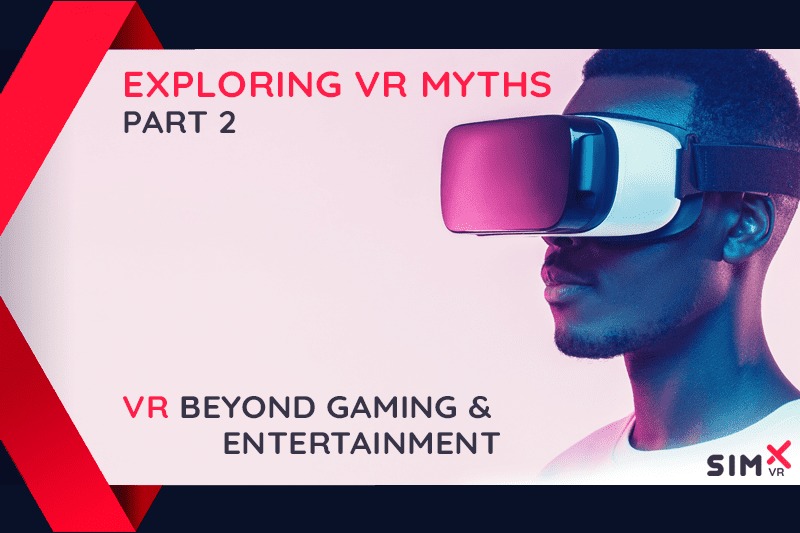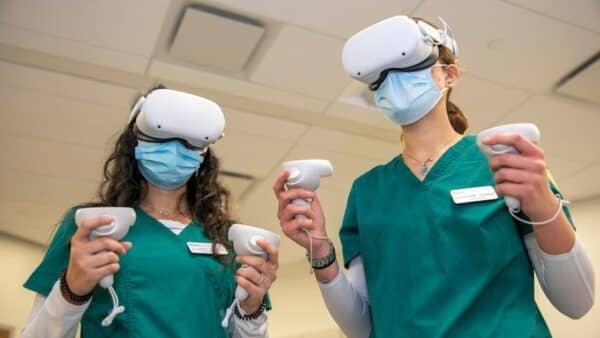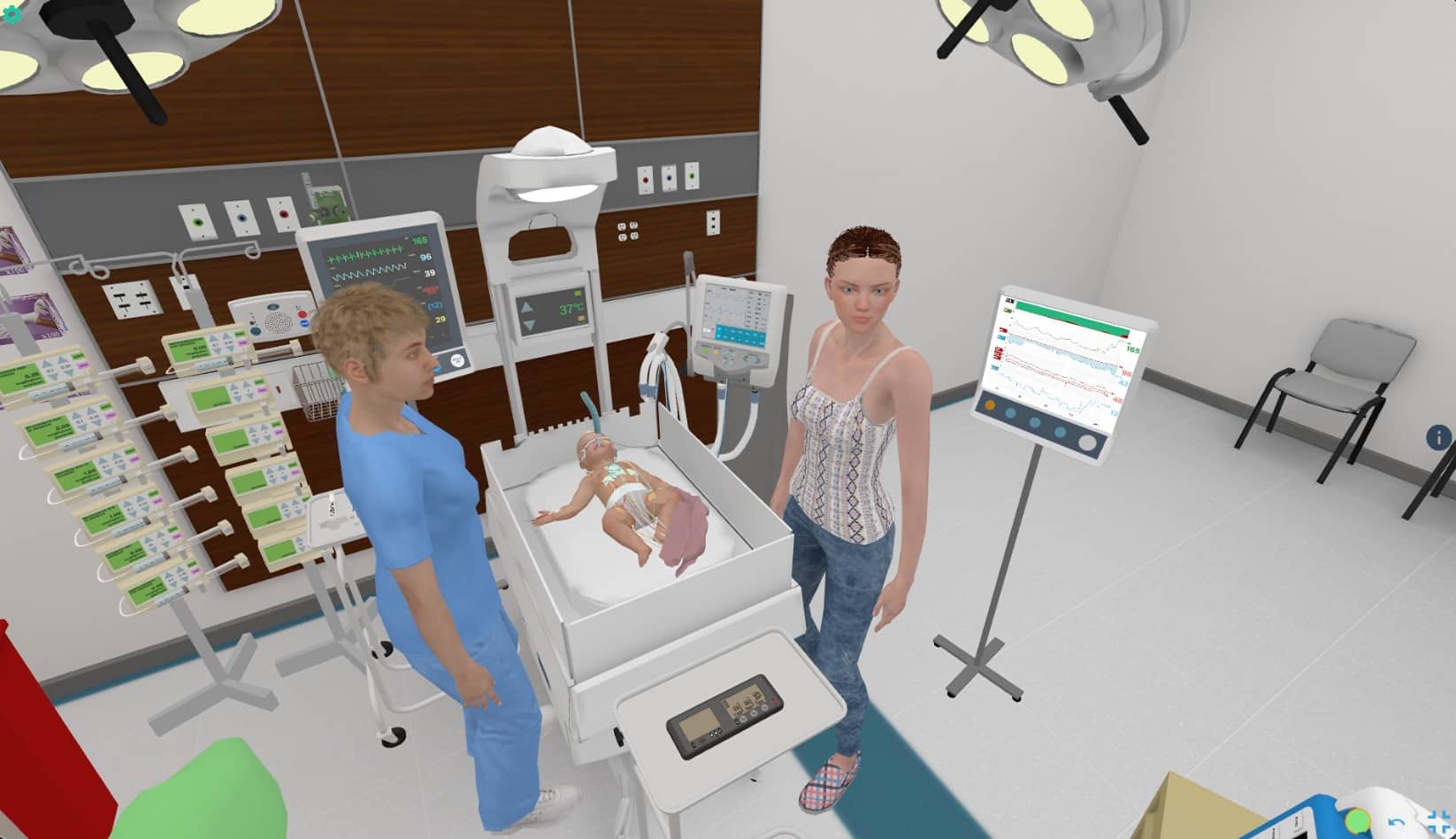SimX is completely changing the way healthcare providers undergo simulation training. For decades, patient manikins have evolved to incorporate varying...
VR Myths and Misconceptions Part 2: Is VR Just for Games?

Myth: VR is Only For Gaming and Entertainment
Virtual reality (VR) has been around for decades, but it’s only in recent years that it has gained widespread popularity. VR is no longer just a novelty for gamers; it has found practical applications in various industries. In this blog post, we’ll explore the many uses of VR beyond gaming, including gamification, immersive learning, simulation training, and more. We’ll also examine the future of VR and its possibilities for enhancing human experiences. This exploration into the world of VR and its users is the second part of an ongoing series debunking common VR myths and misconceptions that keep users from truly discovering all that virtual reality (VR) has to offer.
VR Beyond Gaming
Virtual Reality technology utilizes computer-generated environments to simulate a real or fictional world via immersive VR headsets. This allows users to manipulate and interact with a 3D environment of the creator’s choice. This innovative technology has a wide range of applications across multiple industries, including healthcare, real estate, tourism, and education.
VR has been used in the healthcare industry for both training and treatment. Using virtual simulation, practitioners can utilize VR in medical training anywhere and anytime. Engaging in virtual patient encounters increases the frequency and efficacy of medical training while improving the realism and immersion of simulations. Professionals have also found that VR can be used to treat mental health conditions such as anxiety, depression, and PTSD. A study by the University of Southern California found that VR therapy can be just as effective as traditional therapy for treating anxiety disorders.
VR has also revolutionized the real estate industry by allowing buyers to tour properties virtually. This technology has become increasingly important during the COVID-19 pandemic as it makes it possible for potential buyers to view properties from the safety of their homes. Additionally, VR is being used to promote tourism by giving users a chance to experience destinations before they book a trip. Tourism boards and travel companies have used this technology to showcase destinations and attract visitors.
Beyond gaming, VR is being used to enhance education by creating immersive learning experiences that engage students and help them retain information. Gamification techniques are used in many contexts, including VR education, to create dynamic learning environments and further revolutionize EdTech across many disciplines.

VR and Immersive Learning
VR has the potential to transform the way we learn and train by creating immersive experiences that engage learners and help them retain information. Immersive learning in VR creates a safe environment for students to practice rather than first learning essential skills on the job. This is especially relevant for medical students and practitioners who can use VR to practice procedures in realistic virtual environments without the risk of harming patients.
Additionally, immersive VR learning can be used to teach science by allowing students to explore the human body in 3D or to teach history by allowing students to explore historical sites and events. VR can even teach languages by creating immersive environments where students can practice their language skills. This technology expands the possibilities of learning environments from K-12 classrooms to medical schools by enhancing collaboration and hands-on learning experiences that can help learners at all levels thrive.
Immersive learning can improve student engagement and motivation across many different disciplines. A study by the University of Maryland found that students who learned in a VR environment were more engaged and had better learning outcomes than those who learned using traditional methods. Another Edtech report cites a study showing that students in a mixed reality (combination of VR/AR technology) biology classroom received higher scores than other students. AR and VR can also help with memory retention and recall.
Gamification
Gamification is the use of game design elements in non-gaming settings such as education and healthcare. Gamification has become increasingly popular in recent years, and VR is a technology that lends itself well to gamification. Not all VR content is focused on gaming, but many utilize gamification to increase engagement, immersion, and positive user interaction in a variety of contexts. Gamification injects fun elements into applications and systems that might otherwise lack immediate relevance to incentivize users and increase motivation as learners explore VR encounters.
Gamification allows users to engage with content because they want to, especially in educational environments. By including gaming elements such as awards, customization, objectives, and scoring in VR classrooms and training, educators can create learning environments focused on motivating learners to navigate relevant content.
One example of successful gamification in VR is in fitness. VR fitness games, such as Beat Saber and BoxVR, have become popular because they make working out fun and entertaining. These games provide a full-body workout and can be a fun alternative to traditional exercise. Various VR curricula, programs, and systems have been developed to support users and learners in various contexts beyond gaming. Using gamification techniques, these systems can become more engaging and entertaining for all users.

VR Simulation Training
Simulations have been used for decades in training and preparing professionals for real-life experiences by mimicking true-to-life scenarios either virtually or in physical replicas. For example, airline pilots utilize flight simulators to translate simulated skills into real-world know-how. For many years after commercial flights became more common, flying was seen as a risky endeavor that ended in disaster all too often. However, within the last 40 years, a significant change in required simulation training for all pilots made flying drastically safer.
Where once pilots were expected to learn many skills on the job, they now operate and practice on simulated planes–and even VR simulations–long before they take off with a cabin full of passengers. Currently, flying is considered even safer than driving to the airport, and much of the credit can be given to the rise of simulation training and VR for pilots worldwide. Learning on the job proved to be not only dangerous but also ineffective in teaching these professionals the skills they need to fly safely and efficiently. The same “learn on the job” attitude is still seen far too often in many industries, including healthcare.
In the U.S., preventable hospital errors lead to 50 deaths every hour, totaling about 34,000 deaths a month. The cause of many of these errors can be traced back to a practitioner’s training and educational experience. While simulation training has gained popularity over the years, many skills are still expected to be taught “on the job” through direct experience with real-life patients. However, errors are made, and risks are taken far too often for the sake of education and training. Using VR simulation training, practitioners can develop the skills necessary to improve real-life job performance for healthcare workers and professionals across various industries.
The Future of VR
VR technology continues to evolve with the development of more advanced hardware and systems that allow users to engage with even more immersive and realistic content beyond gaming. For example, more advanced haptic technology is being developed that will enable users to feel sensations in a virtual environment. This technology has the potential to enhance the immersive experience of VR even further.
With more people working remotely due to the COVID-19 pandemic, there is a growing need for tools and technology to facilitate collaboration and communication. VR can create virtual workspaces where team members interact and collaborate in a more immersive way. While the gaming industry continues to be a significant driver of VR innovation, the future of VR use and engagement is being practiced and perfected in many non-gaming contexts.
While VR was once seen as a technology only for gamers, it has now found practical applications in a range of industries. From healthcare to education, VR has the potential to transform the way we live, work, and learn. Gamification and immersive learning are two examples of how VR can make activities more engaging and enjoyable. The future of VR is bright, with new developments and applications being discovered every day. As the technology continues to improve, we can expect to see even more exciting and innovative uses for VR in the years to come.
